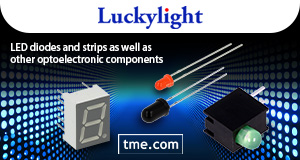Electronic components are basic devices that serve as the basis of an electronic system. Major electronic components include capacitors, resistors, diodes, inductors, transistors, LEDs, oscillators, and crystals. These components possess multiple terminals, which connect to other electrical components to form an electrical circuit. Thus, they play an important role in optimum performance and functioning of electrical circuits. Multiple benefits are associated with these components. For example, they considerably reduce energy consumption and automate processes, which increase the overall efficiency of the electronic devices. Moreover, miniaturization can be easily achieved due to their small size, which makes electronic devices more compact and portable.
Understanding Why Electronic Components are Gaining Traction
One of the major reasons why electronic components are witnessing high popularity is their cost-effectiveness. This is attributed to the fact that manufacturers use affordable materials like copper, plastic, and silicon to develop electronic components. As these materials are abundantly available at a low cost, they play a crucial role in minimizing the manufacturing expenses of electronic components. Furthermore, with surge in focus on sustainability and increase in use of recycled materials, the use for aluminum has increased in the development of electronic components. Approximately 95% lesser energy is required for recycling aluminum as compared to producing aluminum from scratch, which makes it a highly cost-effective and sustainable alternative.
The Aluminum Association further states that recycling of a single aluminum is estimated to save around 1.56 megajoules of energy, which is equal to 98.7 grams of CO₂ emissions. Thus, aluminum is the most widely used material for the development of electronic components due to its cost-efficiency, ductility, and highly non-magnetic nature. Another reason for the affordability of electronic components is low requirement of labor and equipment. As a result, availability of low-cost, abundant materials, energy-efficient recycling process, and minimal labor requirement considerably result in overall affordability of electronic components.
Allied Market Research stated that the electronic components market is projected to generate revenue of $1.0 trillion by 2032. The sector garnered $0.6 trillion in 2023 and is estimated to register a CAGR of 6.9% from 2024 to 2032. This increase in revenue is majorly driven by surge in penetration of consumer electronics and expansion of 5G infrastructure and communication technologies. Furthermore, increase in trend of miniaturization and rise in renewable energy projects such as solar panels, wind turbines, and energy storage systems that rely on power electronics and related components notably contribute toward the industry expansion.
Exploring the Major Categories of Electronic Components
Electronic components are classified into three major categories, including active components, passive components, and electrochemical components. Active components are tools that exhibit the capability to amplify electrical signals and generate power. These components act as alternating current circuits in appliances and gadgets, which contribute to intensify voltage and power. They operate using a power source from a DC circuit, and are essential for increasing voltage and power in electronic devices. Common active components include transistors, oscillators, and integrated circuits. In contrast, passive components cannot supply energy or amplify signals. They work only with the energy available from the AC circuit they are part of. Examples of passive components include resistors, capacitors, inductors, and transformers, which can change voltage or current but not power. Electromechanical components use electrical signals to create mechanical movement, such as motors or switches. These devices combine electrical and mechanical functions; for instance, a manually operated switch is electromechanical because a physical action results in an electrical response.
SMK Electronics Corporation, U.S.A. Introduced Automotive-grade Electronic Components & Technologies
In January 2025, SMK Electronics Corporation, U.S.A., a leading manufacturer and distributor of electronic components, made an announcement that it will introduce a series of advanced electronic components and technologies for manufacturing of automotives. These advanced electronic components and technologies will be displayed at CES 2025, which is known to be one of the most powerful tech events across the globe. This event was held from January 7 to 10, 2025. This advanced series of electronic components and technologies include in-cabin lighting modules, high-power connectors for e-axle applications, passive keyless entry system, and smoke detection sensors. In-cabin lighting modules include in-cabin light engine modules and in-cabin smoke detector sensors. High-power connectors exhibit a compact design, high efficiency, and modularity. On the other hand, passive keyless entry system comprise full featured key fob & receiver keyless access system, which contribute to improving security for keyless vehicle access and operation.
Final Remarks
Electronic components serve as the building blocks of electronic devices, as they play an essential role in minimizing energy consumption and automating processes, which, in turn, increases the efficiency of electronic devices. Active components, passive components, and electrochemical components are the major categories of electronic components. With increase in proliferation of consumer electronics and surge in demand for compact and portable devices are expected to boost the demand for electronic components.

Akshata Tiwarkhede is an experienced content editor with nearly 10 years in the field. Recently, she has expanded her expertise into business writing, applying her editorial skills to create clear, precise, and professional content. With a keen eye for detail and commitment to quality, she continues to refine and develop content that aligns with industry standards.












